Review: LG Chocolate Touch
Dec 3, 2009, 7:11 PM by Eric M. Zeman
LG offers up its third version of the Chocolate phone for Verizon Wireless, this time bringing a touch user interface to the mix. It lives up to the Chocolate's music-rich heritage, but leaves a bitter aftertaste.
Form
Is It Your Type?

If you're looking for a fancy touch phone that puts the music experience first, then perhaps the new LG Chocolate Touch is for you. I doesn't quite have the heavy app-lifting power of a smartphone, but it offers a decent touch-based user experience, a shiny design, and solid music features.
Body
Making a touch phone that stands out from the crowded field is becoming harder every day. These monoblock devices are always rectangular, with few buttons and a front surface that is dominated by a large display. Most of them are black, chrome, or some combination thereof. The Chocolate Touch falls into the chrome camp.
It feels really solid in your hand. The weight is enough to lend the phone an air of quality, and the materials match. The fit and finish of the Chocolate Touch is good and it is firmly pieced together. The back surface of the Chocolate Touch has some soft-touch paint elements that make it easy to grip. It has a comfortable footprint, not too tall, wide or thick, and it slips easily into a pocket.
The front of the Chocolate Touch has only three buttons: Send, Back/Mute, Power/End. All three buttons are oddly shaped, but stand out nicely from the surface of the Chocolate Touch. They have solid travel and feedback, with a nice clicking action to them.
There are a few controls on the left side of the Chocolate Touch. At the very top is the hatch covering the microUSB port. Just below it is the volume toggle. The volume toggle switch is a little bit difficult to find by feel, but it has excellent travel and feedback. There is also a voice / application key wedged onto the left side of the Chocolate Touch, very close to the bottom of the phone. It is similarly hard to find, but also has good travel and feedback.
On the right, a lock key is closest to the top. This button was easier to find and had good travel and feedback. Below it is a dedicated music application key. Pressing it launches the media player. It, also, was easy to find and had good travel and feedback. Last is the camera key. This button was easily found, but it was rather mushy.
The 3.5mm headset jack is on the top of the phone. LG has included an extra battery cover if you don't like the one that comes pre-installed. Unfortunately, LG stuffed the microSD slot under the battery cover. This makes it somewhat cumbersome to get to and is a no-no in my book (considering that this is a media-focused device). It's not actually under the battery itself, but still... The battery cover comes off easily enough, though and snaps firmly back into place.
In all, the Chocolate Touch is easy to use, and that's what matter most when it comes to design.
The Three S's
Screen
The screen is OK, but doesn't compare favorably to some of the newer handsets being announced lately. It measures 3 inches and packs in just 240 x 400 pixels. Many other touch displays are measuring 320 x 480 or greater, so this is a lower-end display — and its obvious when you look at it. LG went with a resistive touch panel on the Chocolate Touch. It isn't as bright or sharp as I'd like it to be. You can definitely see pixels and rough edges here and there, but it gets the job done. There are certainly worse displays out there. Readability was just fine inside, though outdoors posed a bit of a problem for the LG. Sunlight washed out the display from time to time, depending on what sort of background you have on the screen.
Signal
Signal performance was solid with the Chocolate Touch. It always managed to find and remain connected to Verizon's network with no problems. The signal level indicators never seemed to stray below three bars of coverage. Practically speaking, I didn't miss any calls to the Chocolate Touch. I never received any mystery voicemails. SMS messages arrived promptly, and I never dropped any calls. In other words, the Chocolate Touch gets the phone part of being a phone right.
Sound
The ringtones are adequately loud with the Chocolate Touch. One thing to note. Because the speaker is positioned on the back side of the phone, it could become muted if you place it on a soft surface, such as a pillow or couch. Hard surfaces, such as a desk, are fine, but the Chocolate Touch becomes much more difficult to hear if you put it down on a cloth-covered surface. It includes a vibrate alert that I found enough to get me to notice an incoming call. The earpiece speaker was very loud. In fact, if you're in a quiet room, you don't need to use the speakerphone at all, you can hear calls just fine through the earpiece. You can hear calls when in noisy environments, too. Coffee shops and malls were no problem. Quality of phone calls was good. I noticed a few weird echoes, but most of the time calls were clear and free of noise.
Battery
The Chocolate Touch's battery performed well. I was able to get it to last about 2.5 days consistently, even with moderate amounts of music playback. Even heavy web and messaging use didn't detract from battery life too much. Two days was the least I got, so you shouldn't have to charge it every night.
Basics
Menus
LG and Verizon have taken the framework first used in the LG Dare and tweaked it a bit for the Chocolate Touch. The main screen will show your wallpaper with a few ways to get where you need to go. Using either the physical lock key - or the software one on the keypad - will wake the phone up. About two-thirds of the way up the screen on the right side is a little triangle with an arrow. Tap that, a list of shortcuts appears. There are 10 user-configurable applications packed into this shortcut screen. Along with the shortcut screen, LG has added a second tab for media. Users can drag and drop any content to this space for quicker access. They are all just a touch away.
Back on the home screen, there are five software buttons running along the bottom. They are messaging, phone, main menu, contacts and favorites. The main menu icon takes you to the phone's main page for accessing all of the Chocolate Touchs features, applications and settings. If you open any of the menu items from here, gone is the sideways tabbed menu system that is so familiar on Verizon phones. You have to go back to the main menu to access the other items. There is a "back" button at the top left of the screen, and a "home" button at the bottom when in most applications. These buttons do exactly what you expect them to. You can always escape out to the home screen in short order. (The end key performs pretty much the same action.)
The icons all look great, and it is very simple to figure out how to navigate the Chocolate Touch's features.
Calls/Contacts
Calls
The send key at the bottom of the phone brings up a list of all your calls. At the very bottom of the screen are buttons that bring up the dial pad, contacts list, or options menu.
You can go straight to the dial pad if you press the phone icon from the Chocolate Touch's home screen. When in the dial pad, you have quick access to the recent calls log and your contacts. There is a big software button that lets dial a call via voice. I had good luck with voice dialing, and the Chocolate Touch confirms the number with you before it dials.
When in a call, there are six options listed on the in-call screen to open up the dial pad, your contacts list, the Bluetooth menu and several others. It is nice to have such easy access to these other features during a call.
Contacts
The contacts application looks more like something you're used to seeing from Verizon. The top of the contacts application has a large button labeled "Contact List". As with the calling app, pressing it opens a drop-down menu, which includes shortcuts to favorites, groups, speed dials and your ICE (in case of emergency) contact. It is interesting to note that when in the contacts app, you almost always have access to your ICE contacts. I guess LG/Verizon want to be sure you're always able to reach someone in an emergency.
You can choose to search through your contacts by typing their name into a search bar. The Chocolate Touch improves a bit upon the Dare by allowing the device to auto-sort through your contacts as you type. It will start sorting with the first letter you type.
Contacts can hold multiple numbers, email addresses, and fax numbers. You can also set them up to have picture IDs, specific ringtones, and the usual custom stuff.
Messaging
The Chocolate Touch has SMS/MMS, IM, email, chat, visual voicemail, and even some rudimentary social networking services on board.
Punching the messaging icon on the home screen opens up the main messaging center. This is your inbox. All unread messages (SMS, MMS and voicemail) are filtered into this spot. The basic screen here lets you start a new message, or sort your existing messages by sender, size or time received.
Above the messages are the back/options buttons. Below each message are buttons that let you reply, erase or access the options menu. To the right of each message is a little circle. Touch it to reply.
At the top of your inbox is a big button that says "Messages". Touch it, and a drop-down menu will appear, showing you the folders for your sent, draft and voicemail messages. This is a nice, tidy way to keep the screen as uncluttered as possible. Thankfully, SMS messages are threaded.
All message types arrive with a large notification on the home screen. The notification lets you choose to view the message right away, or later. If you choose later, there is a status bar that appears just above the five main icons at the bottom of the screen. In this status bar, you'll see that you have messages, missed calls, and voicemails.
As for email, you can use the browser to access POP3 email accounts, Exchange accounts, or Verizon's mobile email product. Setting up POP3 accounts is so easy a child could do it. Simply pick your provider, put in your username and password, and hit enter. The phone does the rest. New emails appear periodically. You can also check for them manually.
The real interesting thing is that the Chocolate Touch has the ability to post updates to Facebook and MySpace. There's a section that allows you to configure some SMS/MMS based methods to update your Facebook, MySpace and Twitter. Use the on-board client to sign in to each service and it will then allow you to update your status via SMS/MMS to the social network of your choice. It's not the best solution for social networking by a long shot, but it provides at least the most basic feature of being able to share what's on your mind.
Extras
Music
The music player on the Chocolate Touch makes only modest improvements over what was offered on the Dare. The player itself can be launched from the dedicated music key, a home screen software button, or through the main menu. As you'd expect, it has the typical links to Verizon's V CAST music store and Rhapsody music service, where you can download songs. Navigating the V CAST Music Store is still as clumsy as ever. The basic way Verizon's software operates hasn't changed in like seven years.
The player itself has a slightly refreshed interface, with new icons and buttons designed specifically for the Chocolate Touch. The main screen in the "my music" app hosts a number of different buttons. Across the top are four big buttons: play all, shop, sync, and FM radio. It is pretty obvious what they do.
Below them are buttons that allow you to sort through your library via artist, playlists, albums, etc. You can also find the music player's settings menu buried at the very bottom of this screen. Oddly, this menu only lets you alter the repeat/shuffle settings and toggle on/off the airplane mode.
Once you've started playback, the player shows album art, and has easily used buttons for jumping forward/backward and play/pause. Above the album are four software buttons for looping and shuffling music, as well as an EQ and "extras." The first two don't offer any surprises. The EQ button pulls up a set of pre-set equalizer settings that users can choose from. There are only a handful. One of them, thankfully, is user adjustable. It's only a four-band graphic EQ, but it let me shape sound the way I like it.
The "extras" button is the feature that really sets the Chocolate Touch apart from other music phones on the market. There are three options here. The first is "Join the Band." Pressing that button brings up a software drum kit on the screen that users can play along with the music. You can also switch this to a mini piano screen. Neat! One of the other selections is "rhythmical beat." The basically makes use of the phone's vibrate feature in time with the beats of the music, giving the device a more, well, rhythmic feel to it. Last is a visualizer that will appear behind the album art. It's not as robust as others I've seen, but if you're looking for some fancy artwork to go flying across the screen while you're listening to music, I suppose it's cool.
If you happen to go out to the home screen with music playing, a little progress bar appears at the top of the screen that tells you what you're listening to and acts as a shortcut back to the music player.
The sound quality was very good through both my regular wired headphones and via stereo Bluetooth headphones.
Camera
Camera
Like the Dare, the Chocolate Touch has a really solid camera on it. A quick press of the camera button launches the Chocolate Touch's camera in about 1.5 seconds. It feels fast. The default screen shows you what capture mode you're in, what your focus setting is, what your ISO (light sensitivity) setting is, and where your photos are being stored (either internal or external memory).
Touch the screen anywhere, and the full camera menus appear. On the left side are all the controls necessary to adjust brightness, white balance and shooting mode. Below it is a cog wheel that takes you into the extensive menu for fine-tuning everything about the camera. On the right side of the screen is a shortcut to the gallery application, the shutter release and a switch for video mode.
One of the fun things about the camera is that you can shoot in panorama mode. When taking shots, it shows you the far right edge of the last picture you took, so you can line everything up. The auto-stitching process takes perhaps 3 seconds. In the end, you wind up with a picture that has a view of about 180 degrees.
A couple of other neat things are a "makeover" feature that will remove the blemishes from the face of a friend. There is also an "intelligent" mode, which will better adjust to the picture-taking conditions, such as night-time shooting. (Why this isn't the default behavior of the phone is beyond me.)
The Chocolate Touch is much improved over the Dare when it comes to speedy performance of the camera. The camera takes and saves pictures far faster.
The software for the video recorder is nearly identical to that of the camera, and you have most of the same controls. It's too bad it loses the slow-motion recording capability, though.
Gallery
The gallery app is good. You can get to it from the phone applications or a number of shortcuts in the Chocolate Touch's menus. The basic gallery page can fit 12 of your images on it in thumbnail form. Touching any of them will open it up. You can then swipe your finger sideways to page through your images. You can also rotate the phone sideways to landscape mode and the images will auto-rotate and fill the entire screen. You can page sideways here, too. In the regular opened view, there are several buttons at the bottom of the screen. The first is a send button for composing MMS messages, and the second is an erase key. You can also hit the options button to get a secondary list of action items, or use the magnifying glass to zoom in. It doesn't take too much to figure the gallery out.
Photos/Video
Photos
The Chocolate Touch has a 3.2 megapixel camera. To be honest, picture quality wasn't all that good. It had a problem producing in-focus images, especially when indoors. Most pictures leaned to the grainy side, and were soft. Exposure was OK, but a lot of detail was lost in some images due to the soft focusing issue. On the plus side, exposure and white balance were often correct. Outdoor shots in bright sunlight will most certainly be successful, but if you think you're going to get a great shot of your friends in any sort of darkened room (a house party, a bar, a restaurant) think again.
Video
Video didn't fare well, either. I was disappointed with video I shot in all locations and environments. I found the video to be very grainy and lacking in brightness and vibrancy.
Browse/Customize
Browser
The Chocolate Touch has a full HTML browser. Even with EVDO, I found mobile browsing to be on the slow side. The first place it takes you to is Verizon's landing page, which has quick and easy access to the typical sports, weather, and business information. While you can browse in either portrait or landscape mode, I found landscape to be a bit easier to manage most of the time.
The default view is an "optimized" version of the mobile web. If "optimized" means "really sucky", then LG nailed it. This so-called optimized view of the web is supposed to make things easier by placing everything into a single column view. It looks like a ridiculous mash-up of WAP and HTML. Phone Scoop looked like a disaster when using the browser in this configuration. Changing the view to "normal" is where its at. Everything appears as you expect it to when the view is set to normal.
The browser's menu can be accessed via a little icon at the bottom which pulls up a tray of icons and the address bar at the top. These controls let you do different things with the browser, such as go back/forward, zoom in/out, go to your home page, go to your bookmarks, etc. These are no-brainers to figure out and use. The full menu, which is the right-most button, lets you do some nifty things such as automatically include the current URL in a text message.
For the most part, web sites were sluggish to load. Sometimes the resistive screen's unresponsiveness gets in the way of the browsing experience. For example, if it fails to register a touch. In all, I was disappointed with the browsing experience on the Chocolate Touch.
Customize
The Chocolate Touch lets you change a number of features to make it more your own. It comes pre-loaded with several themes, some wallpapers, and other images. You can adjust the menu fonts (as in LG Serif, LG Script) and dialing font size. This means making the fonts just a tiny bit bigger. Almost every function can be assigned a vibration, bleep, blip or burble of some sort.
Extras
Bluetooth
The Chocolate Touch pairs easily with both mono and stereo Bluetooth headsets. I found call quality in mono headset to be OK, and music playback in stereo headsets to be good. I had the Chocolate Touch randomly disconnect with stereo headsets from time to time, though. The Chocolate Touch will also connect with PCs and can pass certain file types back and forth.
Clock
The Chocolate Touch has a very useful clock. When the Chocolate Touch is in sleep mode (with the screen off), a quick push of any of the keys will bring up the unlocking screen. On the screen, the time is shown nice and large at the top. There's no difficulty in telling the time at all.
GPS
The Chocolate Touch comes with Verizon's VZNavigator software on board. This is the only option for getting maps and directions. The service, which costs $10 per month, is very good. It is easy to use and creates decent maps and routes between destinations.
Search
Users can always go to Google.com to perform searches, but the Chocolate Touch also comes with Microsoft's Bing search client. The free software lets users search for whatever they want. With the location feature turned on, it will always return local results first, which makes searching for McDonald's that much more useful. I found it to be pretty good at finding what I wanted, though the user interface is a little clumsy. For example, the "search" button is downright teeny and hard to hit.
Video
Wrap-Up
The Chocolate Touch is a decent little phone that provides a mix of good and bad. The music features are very good for a Verizon phone.
The camera and video software work great, but the resulting images and videos are sub-par. This is a real shame. The device has made some real improvements when it comes to speed and usability.
Call quality and signal performance were excellent, but strangely web browsing speeds were slow and painful. The browser itself is mostly usable, but needs some settings tweaks first. If you're really into the mobile web, there are better (and faster) alternatives.
Last, the overall design and usability of the Chocolate Touch work well, and make you believe that you're holding a quality piece of hardware. So, if touch phones are your thing, and you can look past a slow browser and less-then-amazing camera quality, the Chocolate Touch isn't bad at all.
Comments
Anyone having issues with this one?









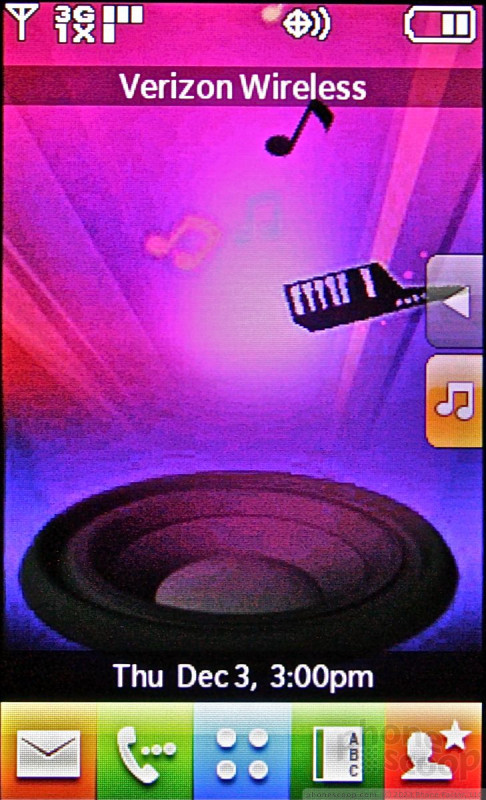

























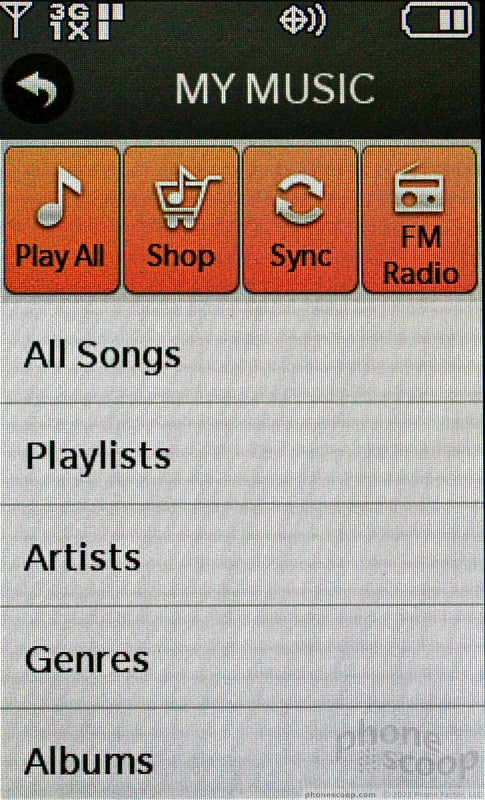








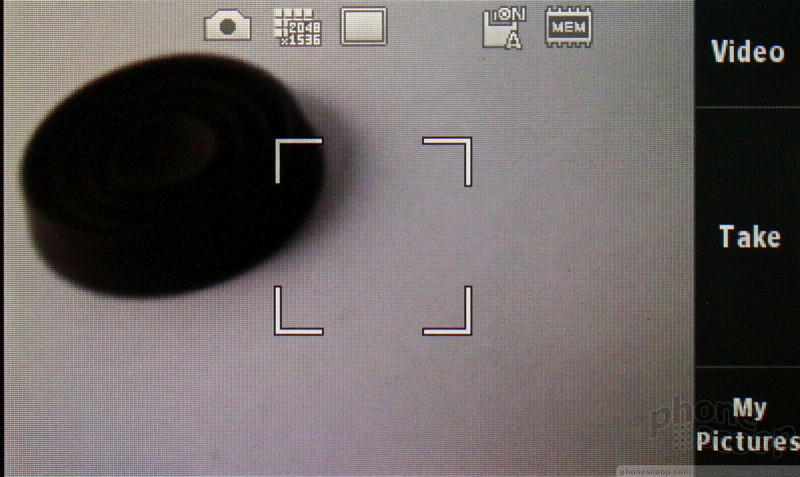




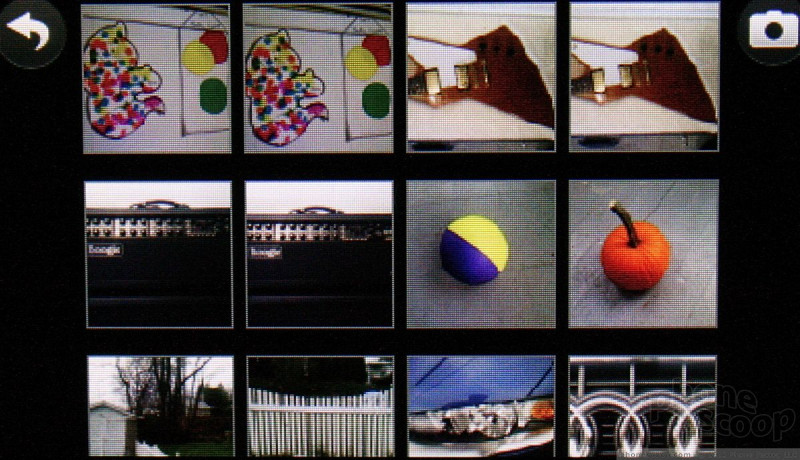




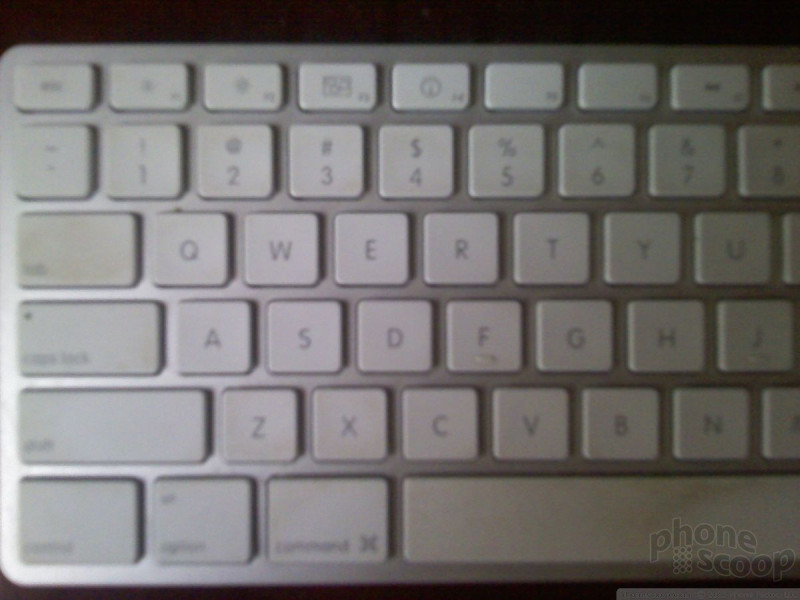












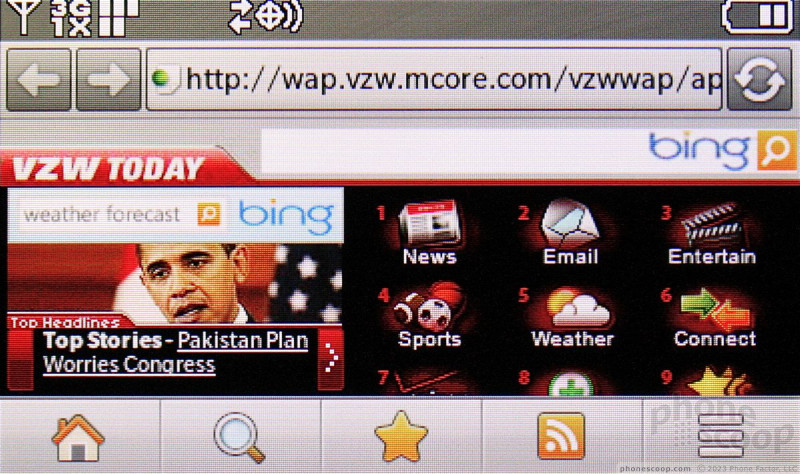





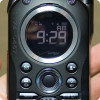 Verizon Holiday Line-Up
Verizon Holiday Line-Up
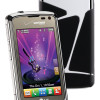 LG's Chocolate Touch Kicks Out the Beats
LG's Chocolate Touch Kicks Out the Beats
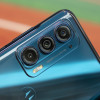 Hands On with the Motorola edge (2021)
Hands On with the Motorola edge (2021)
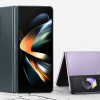 Samsung Refines its Foldable Phones
Samsung Refines its Foldable Phones
 iPhone 14 Plus Offers a Big Screen For Less
iPhone 14 Plus Offers a Big Screen For Less
 LG Chocolate Touch / 8575 Touch
LG Chocolate Touch / 8575 Touch


